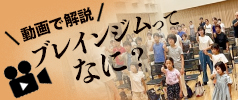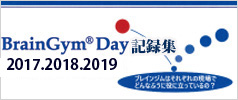 |
|
Like millions round the world, when the tsunami wreaked its devastation last December, our first instinct, was to ask, “What can I do to help?” But the scale of the disaster was so gargantuan that sending money didn’t seem adequate. Since we are both Edu-K and Touch for Health Instructors, we believed we had valuable skills to support the survivors—we just wanted to be where people needed us. Our proximity to the disaster area was also an added push. (Henry is from Semarang, Indonesia, and Li-Anne is from Singapore) As of May this year, separately and together, we have made four trips to Medan and Banda Aceh, Indonesia. Foundation Board Member Moira Dempsey also Early on, we had decided to focus our energies on trauma relief. In weeks after the big wave, aid agencies’ priorities in Indonesia had been medical aid, food security, clean water and accommodation. We used this period of time to locate contacts, refine our plans of operation and our learning menu. Our goals were simply to: The learning menu that we felt would meet these needs would include eight Brain Gym Activities, which would include PACE and also Gary Craig’s Emotional Freedom Technique. We took as our inspiration Dr Svetlana Musgatova’s work with trauma. Just after the tsunami hit, Li-Anne also had the good fortune to meet Dr David Gruder the founder of the US Association of energy psychology and he had had great success using EFT with victims and families on ground zero. Aceh Sepakat Even after the horrors and the loss of life and property, the Acehnese held their pain firmly behind their smiles. They would laugh and joke. They tried to live life as normally as possible, whether they were sleeping communally in halls with 30 or 50 others in Medan; or living in tents over dirt clearings in Banda Aceh; or tiny housing units built in long stretches across the countryside also in Banda Aceh. Living with Trauma Many worried incessantly about the future. Others would obsess over all they had lost. In more serious cases survivors would have phobias or anxieties about water, heights or just feel hyper-vigilant at the slightest noises. More than 90% of the time, those who completed the course reported that they had their first good night of sleep after their class. One hundred percent of participants reported a 50-90% reduction of anxiety. Structuring our Work We taught classes that ran approximately 2 to 5 hours depending on the circumstances and class size. We taught as many as 10 to 60 each class. Where possible, we kept to an optimum class size of 10 to 20. These classes encouraged participants to share their fears and experiences and helped them identify the effects of stress and trauma and how it related to their brains and bodies. Then we would share briefly about the three dimensions of the brain and how they related to trauma and how integrating them would assist in helping them to digest their experiences and release old stresses. The sessions Some Success Stories Hallucination Henry, another trauma volunteer (With another relief organisation) and Li-Anne worked with a girl called Kiki. She looked to be about 19-23 years old and was hallucinating. She was so traumatised that she was hallucinating that she was still in the Tsunami. We spent about three hours with her and after that she became more present. When we visited another day she was able to be present in daily life and did not seem to slip back into the past again. Numbness Li-Anne worked on a man who looked like he was in his 50s or 60s. He had walked for more than ten days to safety. Both his legs had been completely numb for 20 days and he could not feel them. After working on him for about an hour with Three Dimensional Repatterning and movement re-ed, He gained more than 90% feeling in his legs again. Psychosomatic Problems In some one-on-one sessions, Henry noticed that that up to 75% of people complaining of knee problems (even when there was no injury). Many would feel pain and uneasy when moving from standing to sitting. A doctor also found many people coming to his camp for medical attention with similar problems. Even thought the issue was psychosomatic, and doctor could only give drugs to reduce pain. Those that used brain gym and EFT for trauma relief, soon felt relief from their stress, and the pain in their knees disappeared. And they could stand easily! On a funnier note, Brain buttons offered unexpected benefits. After doing their brain buttons, many refugees would burp. Many had gassy stomachs after the Tsunami. And they would laugh because they felt relief, and feel amazed that, just by touching a point, they could feel the changes instantly. From that Henry and I learnt deeply about psychosomatic symptoms, and how Brain Gym could help them a lot. Phobia of Heights Imros a tailor in her late 20s was afraid of heights since she was carried away by waves more that 2 stories high. She had also been afraid of the dark, the minutest noises and ghosts since the event. After 45 minutes of Brain Gym and EFT her face looked visibly brighter and more relaxed. She could even climb up to the highest step of a shaky ladder unaided. Trauma from Police Brutality Henry and Li-Anne worked on a 5 year old Medan boy and his family. His father was a colleague of a friend. The boy had been repeatedly kicked and brutalised by a policeman at the playground. He was just there at the wrong place and the wrong time. When Henry and Li-Anne first met him, he refused to talk. He was lifeless and completely traumatized. He would not go to school and would get upset if anyone mentioned the words ‘playground’ or ‘police’. We spent about an hour and a half working on him and another hour on his parents. The parents were full of anger, guilt and self-blame. After that session, the little boy could go to school again, unaccompanied. The life came back into him and his eyes, observed his parents. His father was less bent on revenge and both could finally forgive themselves for not being present when the son was attacked. Being In Pace Being from a country that rushes and has things on time. Being in PACE with the environment meant being at peace with the chaos so that our clients could find a new sense of with their challenges. Tsunami Learning Menu Update 2006 : Back to Banda Aceh Return to Aceh Driving into Banda Aceh from the airport, it was heartening to see the buzz of recovery everywhere. All the debris and waterlogged areas had gone. Construction was taking place everywhere. The schools that were gone had been built and replaced. People were rebuilding the physical structures of our their lives. The busyness gave the impression that things were looking up. In terms of work with YUM, Henri and I also felt closer to our long-term goal of having Brain Gym instructors in Aceh. Talking to parents and psychologists on the ground, what YUM and their clients needed was more support in terms of special needs. There was a woeful lack of resources in that area. Now that the immediacy of the tsunami had passed there was also more attention placed on domestic violence. In fact, a psychologist brought in a little girl to be worked on and she had been semi-paralysed by a physically abusive father. I can only speculate that there will be much more work to be done the area of domestic violence, since the Acehnese have lived in violence for so long in the fight for self-determination. Visiting a local school, teachers also reported increased hyperactivity and aggression amongst students. These can be indicative of unresolved trauma, so while the international spotlight on Aceh has waned, There is still lots to be done in terms of trauma relief. Rather than hold our regular classes meant for relief workers and survivors we decided to adapt materials from Li-Anne’s one-day Brain Gym workshop. This would prepare YUM’s associates and clients with more tools then our Tsunami trauma relief protocol. The course would provide them with more understanding about the 3-dimensions of the brain, and how they affect children with special needs show them more about 14 Brain Gym activities. This would provide attendees with more Brain Gym tools to work with and also prepare them for our next trip to Aceh where we would donate our time for a Brain Gym 101 certification class. In Jogjakarta |
Educational Kinesiology Association JAPAN
MENU
(原文)災害を乗り越えて:トラウマを抱えて生活する人々のために
- HOME »
- (原文)災害を乗り越えて:トラウマを抱えて生活する人々のために









